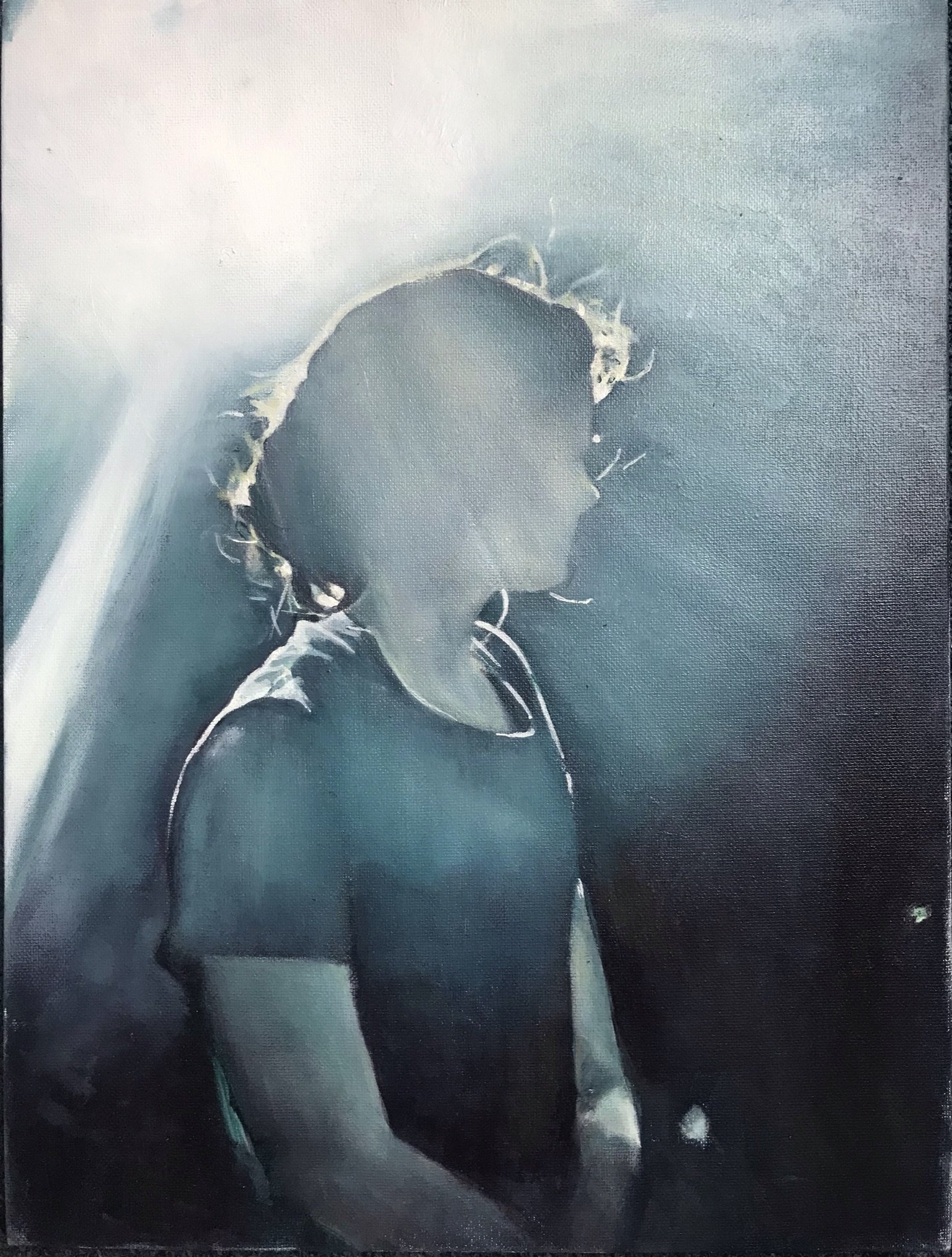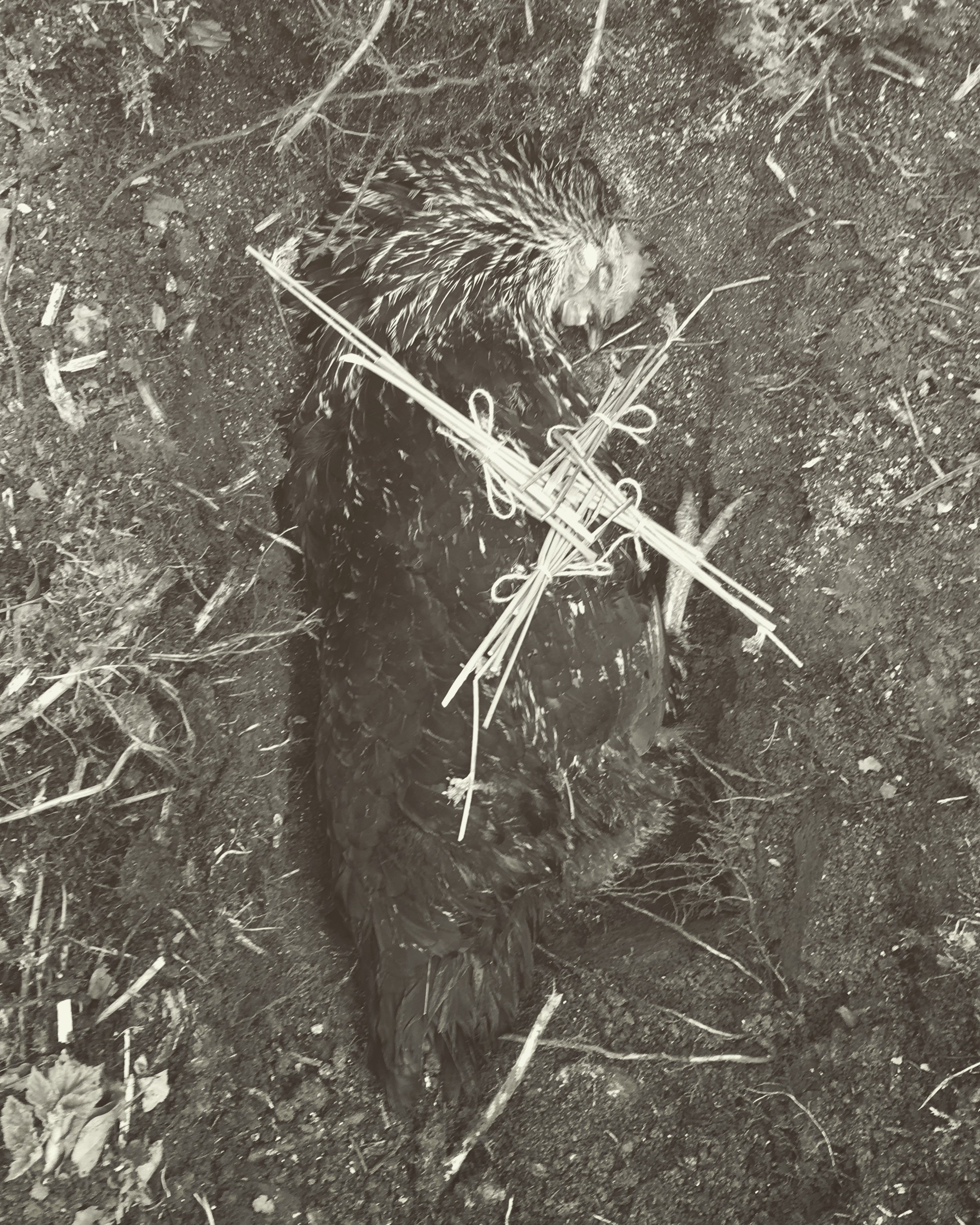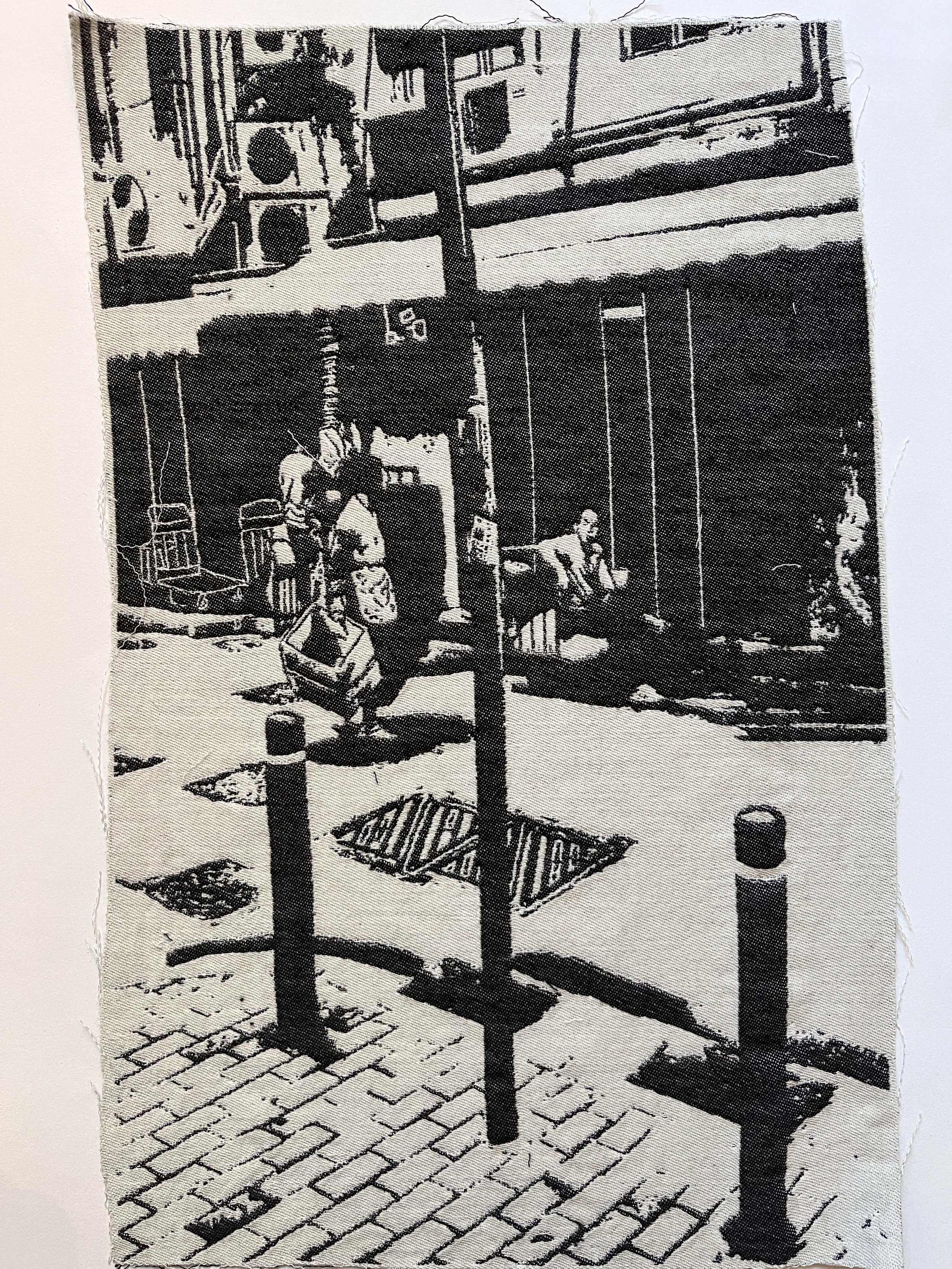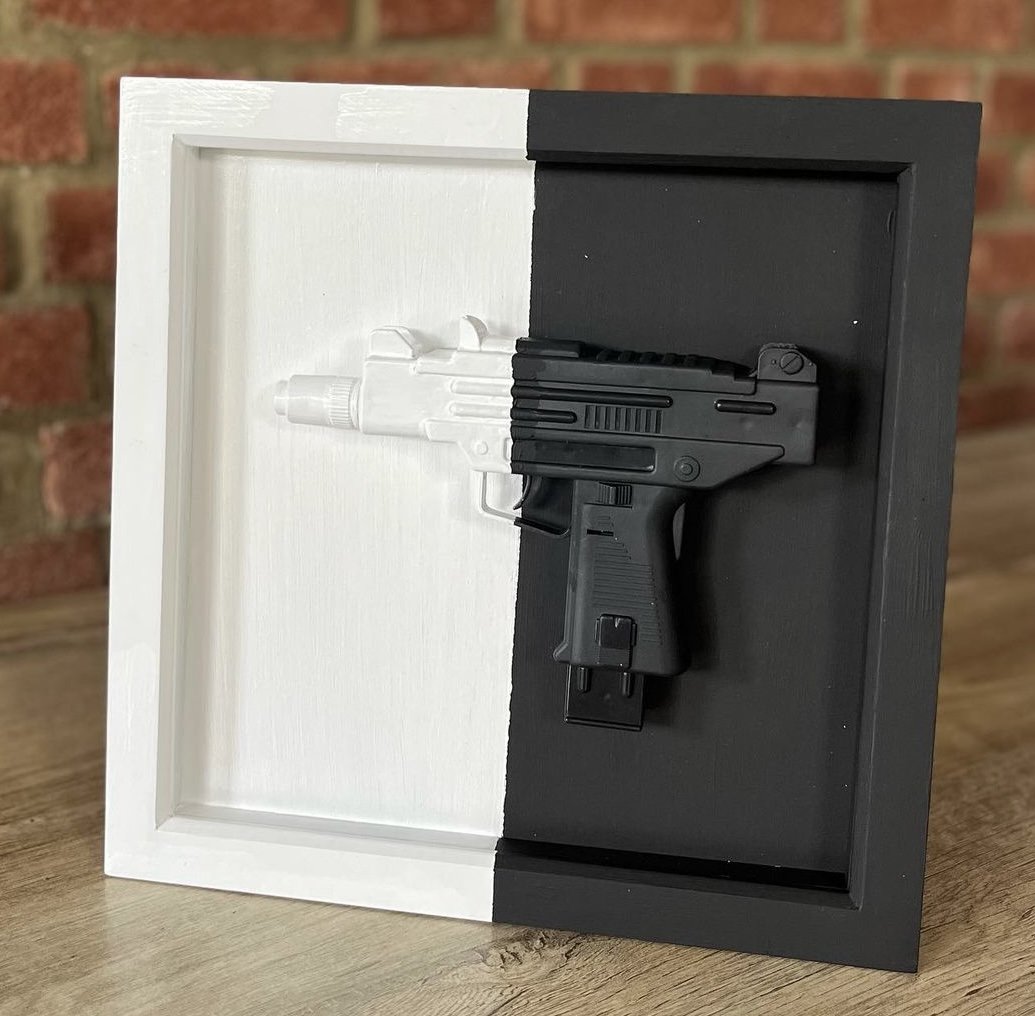This month we are exploring the theme of Light and Dark—in all its nuances, contrasts, and in-between spaces. This open call seeks creative interpretations that push beyond the literal and embrace the complexity of duality, convergence, and transformation.
We asked artists to consider:
* The interplay of light and shadow: How light and dark coexist, influence each other, and create depth both visually and metaphorically.
* Liminal spaces between extremes: The transitions where light fades into darkness and vice versa, exploring uncertainty, ambiguity, and transformation.
* The grey areas of existence: Moving beyond stark dualities to examine how nothing is ever truly black or white, reflecting on moral, emotional, or conceptual ambiguities.
* Opposites interacting: The tension, harmony, or fusion between contrasting elements—hope and despair, clarity and obscurity, life and death.
* Emotional and symbolic weight: What does light signify? What does darkness hold? How do they shape narratives, moods, and perspectives in creative work?
* Metaphors of illumination and obscurity: Light as knowledge, revelation, or purity; darkness as mystery, the unknown, or the subconscious.
* The cyclical nature of light and dark: Exploring patterns of day and night, seasons, personal growth, and transformation through shifting contrasts.
Artist: Ali Mulroy
www.alimulroy.weebly.com
Selah. Description: I work figuratively and experimentally: continually drawn to light and dark as my focus. The internal narrative created through lighting is something I am eternally inspired by. A piece exploring the timeless qualities of the pause. Selah - a pause within a musical composition.
Artist: María X. Fernández
https://www.mariaxfernandez.com/
Description: A series of works based on Goethe's studies of the spectrum created at the boundary between light and darkness. These works, which follow Newton's theories, understand darkness not as the absence of light, but as an entity in its own right. In these experiments, I use lenses and moving figures.
Artist: Johannes Christopher Gerard
https://www.johannesgerard.com
Mystery Light. Description. To mention it right at the beginning: all three works I submitted contain and reflect autobiographical elements related to my struggle with mental disorders and problems. The first photographic work, titled "Mystery Light", shows a hallway that is mostly in darkness, only part of it is illuminated by a soft light whose source is unknown or at least not visible. A door at the end of the hallway is half open. The space behind the door, however, is covered in darkness. This is how I see the world around me and it is a symbol of my questions about where my tormented mind will lead me.
Artist: Neil Shrubb
https://www.saatchiart.com/en-gb/neilshrubb
View from the fire escape. Description: A mixed-media piece taken from photography in New York, this became a study of light and its cast shadow. Originally a drawing, layers of paint and pastel were built up, removed, re-applied, and varnished until I was happy with the tonal qualities, depth, and colour.
Artist: Marin Flora-Michèle
https://alexandrabouge.tumblr.com/
UNTITLED. Description. Marin Flora Michèle my mother made a series of photographs on homeless people. The whiteness of the sheet in which the homeless person is wrapped contrasts with the background made up of black, oppressive bars, which seem to sink into the body.
Artist: Nicholas Middleton
https://photo-analogue.blogspot.com/
Description: As with photography, on which it depends, the invention of cinema has many claimants; like photography, cinema was equally an idea whose time had simply arrived, largely as a result of other inventions, the most important being photographic emulsion applied to a flexible base - film. If the cinema is understood to be a communal, theatrical experience, with an audience watching a projected image from moving photographic film, the first demonstration of cinema belongs to the Lathams: Woodville and sons Otway and Grey. The Lathams are forgotten cinema pioneers, despite their first public projection in New York, May 1895, a footnote in cinema history due to the inferiority of their technology while the Lumière brothers are more popularly given credit for ‘inventing’ cinema when they projected their films before a paying audience in Paris, in December 1895. 'Swinging Light' is inspired by two distinct aspects of Lathams’ story, filmed on a single strip of 2x8mm film. The Lathams first tests were made in early 1895, filming a swinging light. Although not explicitly stated as a lightbulb, I would like to believe that, if it was, its use seems to be an unwitting reference to Thomas Alva Edison. Edison claimed to have invented the lightbulb, despite prior claims by Joseph Swan and others; Edison was resist to the idea of projecting films, and a couple of his employees moonlighted with the Lathams to work on projection. The Lathams are remembered today through the Latham loop, a slack piece of film either side of the gate to allow the continuous motion of the film through camera or projector to become intermittent at the point of filming or projection: this is visible in the right hand frame, showing film moving through a camera, against the swinging light on the left.
Artist name: Pryddywyrd
https://axisweb.org/artwork/pryddy-wyrd
Pryddywyrd is an ongoing project by Julian Claxton that started in 2023. Firmly based in its particular locale on the isolated, mysterious Mendip Plateau, the work moves between the representation of objects and events to the making of objects, working within tropes of folk, gothic and folk horror. The work is mainly seen through photographs posted on the Pryddywyrd Instagram account. These exist in the grey zone, approaching dusk with mist and fog ever present.
Bridie. Description: The burial of a treasured chicken, Bridie, laid to rest in a shallow grave, following a sudden death, now protected for her future journeys by a Saint Brigid cross, made from sedge growing in the field she lived in and a clay pot made from the mud she scratched in filled with corn. Still warm, she exists in a liminal space in this photograph recording the moment when the light of day still fell on her before her forever journey to the dark.
Artist: Philip Vaughan-Williams
Description: ‘Re-Write (The Dark Side and The Light Side)’ are pieces of work exploring narrative. At a point 50 years into the artist’s life, this is a reflective piece about the different paths and junctions in life that could have been taken year by year, whereby a life narrative could have been placed anywhere between the most positive and negative of experiences.
Artist: Philip Vaughan-Williams
The in-between. Description: 'The in-between' is a self-portrait of the artist. Tattoos represent the dark and the light sides of the artist, with a connecting line across the chest, detailing a life journey and highlighting the narrative of fluctuating mental health.
Artist: Richard Eveleigh
https://www.richardeveleighartist.com/
UK-based artist, Richard Eveleigh, has exhibited work across Europe and America. He has shown at the Truman Brewery, The Signal Gallery and the Mall Galleries. Richard regularly exhibits work at Ad Lib Gallery in Wimbledon Village and Artly Mix in São Paulo. Shortly after graduating from the University of Portsmouth in 2011, Richard suffered a series of brain haemorrhages. His work is heavily influenced by this experience and his exploration of "duality" encapsulates this. While a traumatic and disruptive experience it is also a driving and motivating force behind his art.
Dawning. Description: The image "Dawning" captures an English village as the Sun rises on a misty morning. The scene forms part of my exploration into the conflicting nature of rural locations. It is both quaint and unsettling. The use of a monochromatic filter emphasises the more moody qualities of the foggy vista.
Artist: Gary Willis
'Cat', George Street, Hastings 05.05.2024
Description: Living between ‘Light and Dark’. Some days good, some bad. Those who struggle to live with mental health problems. Externalising their internal anguish and pain. Then countered by smiles and jokes. Portraits of those most vulnerable. Showcasing the rising plight of homelessness. In Britain. And in my home town, Hastings. From: “No Home. No Hope?” Photography/Installation PhotoHastings Group Exhibition St. Andrews Mews, Hastings October 2024 14 portraits were dramatically curated with the photographs expelled, made homeless from their frames (see image 2) and an installation (see below) highlighting the alarming statistic that at least 140,000 children were homeless over Christmas. And all in a country that proclaims to be the sixth-largest economy in the world. For awareness and on-the-spot donations for local charity ‘Warming Up The Homeless’, Hastings. Light and dark. Day and night. No home, no hope? Welcome to broken Britain. Welcome to homelessness in Hastings. There, not here. Them, not I. Someone's daughter. Someone's son. Someone's mother. Someone's father. “It would never happen to me”.
Artist: Susanne Klein
https://www.instagram.com/susanneklein3/?next=%2F
The Battle of Tewkesbury. Description: The Battle of Tewkesbury is based on a digital image which was reduced to index colour. Transferring the image to the lino plate introduced an uncertainty of where the bushes start and where the soldiers end. I enjoy the ambiguity of the prints and give the audience the freedom to see what they want.
Artist: James Frew
https://www.jamesfrewfineart.com
Someone I Can Comfortably Be Ugly With. Description. Through a process of digitally photomontaging Internet imagery and text, these works explore the diverse nuances of light and dark found in online behaviours – from transgressive, profane, humorous, hopeful, to the outright ridiculous. Light and dark is here presented not as a literal optical manifestation, but as an exploration into the diverse and often incongruous psyche of post-digital culture.
Artist: Caroline Lacoma
https://www.carolinelacoma.com/
The Sun At Midnight. Description. "The Sun At Midnight" mirrors my paradoxical journey as a Black body in diaspora. Since leaving my home island of Guadeloupe in 2017, I have experienced hell and heaven, darkness and light, love and hate, peace and chaos. Thus, "The Sun At Midnight," with its oxymoronic title, reflects the complexity of two truths coexisting: the bold presence of the sun represented by my afro and the quietness of midnight.
Artist: Paul Tranter
https://paul-tranter.com
Description: My three works, black and white photographs entitled 01:59, 09:59 and 17:59, were taken exactly 8 hours apart on Saturday, 18 November 2023. The images were taken with a Lomography reloadable, point-and-shoot camera using ISO400 film. The images capture three points in time during a 24-hour journey on foot through the English countryside. Starting at midnight, I had one day to travel as far as possible away from Meriden, the historical centre of England, on foot, with distance measured ‘as the crow flies’. These images are part of the artwork, ‘Escape 54.6 (ATCF)’, that came out of that journey. The experience of making this work, and the images submitted, evoke, for me, a number of the themes of ‘Dark and Light’. Running through the night, becoming increasingly tired and physically hurting to be met by daybreak. That seminal moment when light breaks the horizon. Light accompanied by bird song. Light that infuses the body with renewed energy and determination. That is the rise. But then the fall. The long, slow inevitability that the daylight won’t last. This is England, in winter, our days are brief. You watch the sky turn grey and then black. Light from the sun finally distinguished and the dark space you have entered after running for hours on end is mirrored by the pitch black sky. Physical and emotional darkness. Travelling through that cycle of night and day is not only physically challenging it is emotionally tiring. But also enlightening. How the body and mind response to their environment. The power of daylight to lift the soul, the body lifted as if powered by the sun. And the ability to keep moving forward even in the darkest places.
Artist: Mia Upton
https://www.instagram.com/weavercreature/
Quiet Hours. Description. This woven series captures the overlooked realities of Hong Kong’s street-level life—scenes that unfold beneath the towering skyline yet define the city’s true essence. Inspired by my research into family history and black-and-white photographs of Hong Kong, I sought to translate these everyday moments into woven form, blending illustration, photography, and graphic elements through the precision of the Jacquard loom. Each piece presents a different perspective of life on the streets. The first depicts a narrow backstreet where restaurant cooks and workers take a break, briefly escaping the heat and intensity of their kitchens. The second reveals the layered relationship between public and private space—a residential block backing onto a bustling main street, capturing people on their way home. The third shifts to the water’s edge, where an elderly woman sits fishing, watching the boats in the harbor. The salt stains on the pavement, left by years of crashing waves, mark the quiet permanence of these spaces. For a Hong Kong local, these are familiar images—scenes so ordinary they often go unnoticed. Yet, in a city dominated by spectacle, wealth, and tourism, these moments are vital. They reflect the rhythm of daily life, the spaces where people truly live. Through textiles, I aim to preserve and highlight these fleeting, grounded moments, inviting the viewer to look beyond the skyline and into the heart of the city’s streets.
Artist: Christina Catherine
christinacatherineartist.com
Persephone's Pomegranate. Description: This oil painting was inspired by the myth of Persephone and depicts a classic tale of duality. After eating pomegranate seeds, Persephone finds herself bound to both the world of the living and the underworld. Her journey is one of balance—caught between two worlds, she is both a symbol of renewal and a reminder of inevitable descent. She serves as a cautionary tale of the fragile boundary between light and dark, as well as freedom and fate.
Artist: Marc Butler
Uzi Lover (2023)
Description: (Mixed media assemblage) Uzi Lover is a firearm designed to disturb even more than it already does given its raison d'etre as a weapon. With a monochrome paint job, the piece takes on a strikingly stark light/shade effect. The black half is painted in black-board paint (a critique, albeit a rather clunky one, of US high school shootings) - why is such a weapon being glorified with a snazzy paint job on the wall of a plush art gallery, when we all know what it's capable of? It looks pretty, and we can't take our eyes off it. It is, therefore, even more dangerous?
Artist name
Ayşegül Altunok Zilkovski
I Will Light Up the Lights for You to Find Me...
Description: This video depicts an old woman in a desolate and abandoned scene, touching an arrangement of lights. She might be setting it up or simply observing it… Yet, she is trapped in an endless cycle of waiting and motion. We do not know why she is there, what she is doing, or whom she is waiting for. All we witness is a state of uncertainty, an endless waiting caught in a loop. This work was created using 3D modeling software and AI tools. I construct my own sculptural language in digital mediums, integrating the light, composition, lyrical titles, and spatial relationships that I employ in my sculptural installations. At the same time, I transform these elements into moving images, opening them up to be rewatched in a relationship between humans and something beyond this world. I emphasize the power of light, the contrast of the scene, and the unknown nature of nourished time through the effect of black and white.
Artist: Emma Mitchison
https://portfolio.adobe.com/1d85c8bf-e221-4604-9728-152e7d852a39/editor/
Velvet Pyre, Description: Blown Glass, Soot, 13x 15cm. This sculpture, veiled in soot by the light of a candle, plays with the inherent transparency of glass. The process of coating the surface in carbon soot absorbs light, leaving behind a dense black patina that resists visibility. The carbon shroud encasing the glass acts as an unreliable shield, being wiped away with even the lightest touch. Inspired by early 19th-century sound recording devices that etched sound waves onto smoked glass.
Artist: Gary Dempsey
https://www.think-ink.eu/
Tine Chnámh na Sionainne (Shannon Bon Fire). Description. This artwork captures the eerie essence of Samhain, the ancient Irish festival where the veil between worlds is at its thinnest. A towering bonfire blazes at the heart of the composition, its white-hot flames slicing through the deep blackness of the surrounding night. The stark contrast of black and white reflects the two realms—light and dark, life and death—pressing against each other in this liminal moment. Around the fire, a gathering of masked figures stands at the threshold of the seen and unseen. Their carved expressions—grinning, hollow-eyed, ghostly—distort in the shifting glow, blurring the line between human and spirit. The fire’s light flickers across them, challenging perception of who belongs to this world and who has crossed through the veil. Beyond the fire’s reach, others linger in deep shadows, where darkness swallows form and identity. Shapes emerge, giving the impression of figures half-there, as if unseen presences hover just beyond perception.























